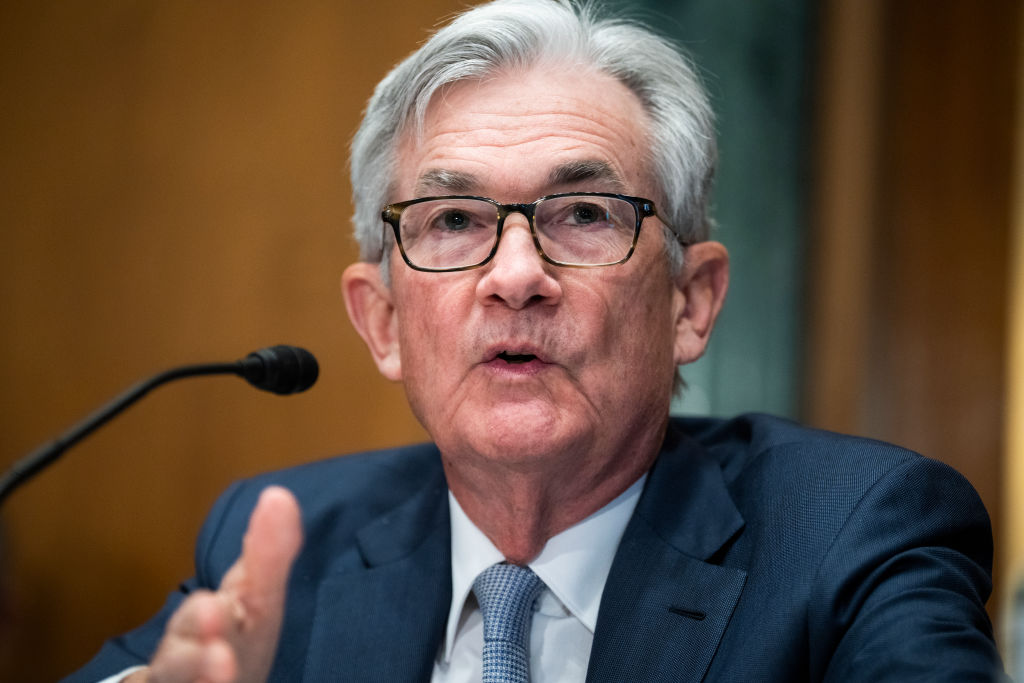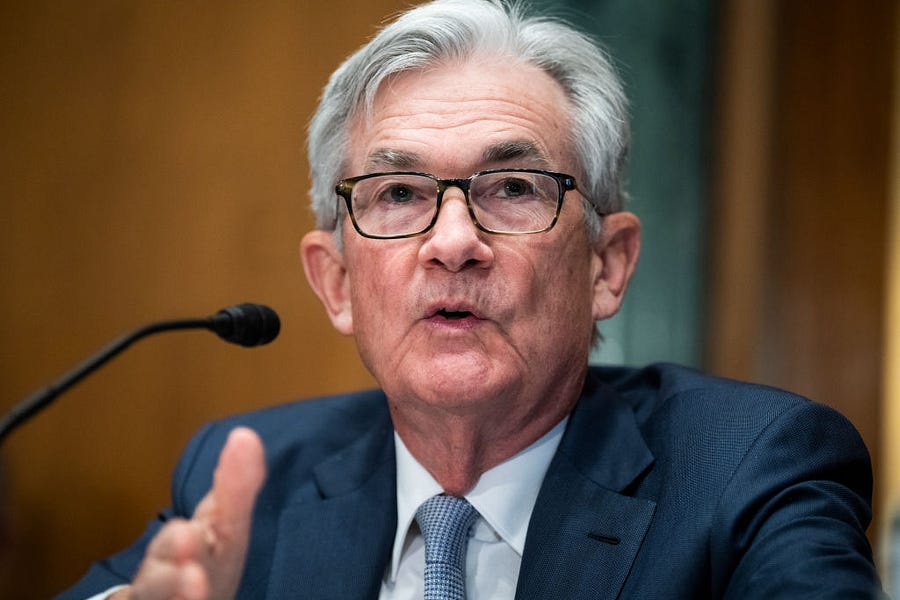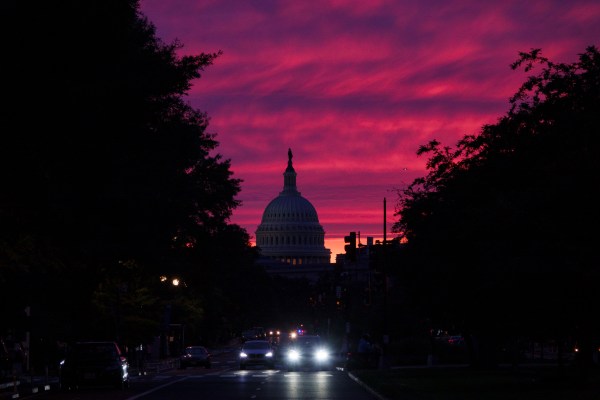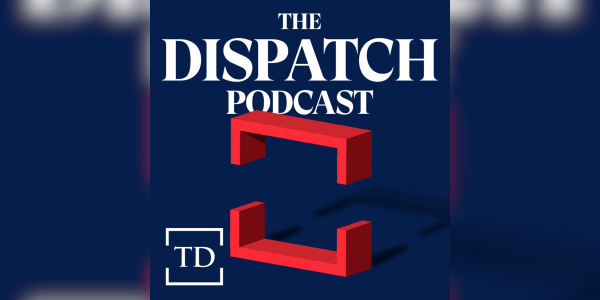Happy Friday! In either an incredibly bizarre coincidence or sign of the coming apocalypse, the first- and second-place entries in the TMD March Madness pool so far are named after the same bushy-tailed rodent: Congratulations to “Squirrel_Cowboy1” and “Curls for the Squirrels.” Shoutout to ESPNFAN94966328711, too. Your username might not jump off the page, but you’re tied for second.
Declan’s bracket is in such tatters after yesterday’s games that we’re sending him away for a week. You will likely notice a significant dropoff in Bears content while he’s on vacation.
Quick Hits: Today’s Top Stories
-
One day after President Volodymyr Zelensky’s address to Congress, House Speaker Nancy Pelosi reaffirmed her opposition to implementing a no-fly zone over Ukraine. “We’re not doing [that],” she told reporters. The House did, however, vote 424-8 on Thursday to pass legislation suspending normal trade relations with Russia and Belarus. The Senate is expected to advance the bill quickly to President Joe Biden’s desk for his signature.
-
Secretary of State Antony Blinken on Thursday became the third high-ranking Biden administration official to accuse Russia of committing war crimes in Ukraine, one day after Biden himself called Russian President Vladimir Putin a “war criminal.” A Kremlin spokesman responded Thursday, calling Putin a “very wise, prescient, and cultured international figure” and condemning Biden’s remarks as “impermissible, unacceptable, and unforgivable.”
-
Biden is slated to speak with Chinese President Xi Jinping this morning amid reports the White House believes Xi is leaning toward lending Russia additional economic support and/or bolstering its military effort in Ukraine.
-
A Russian court on Thursday extended the detention of WNBA star Brittney Griner another two months, through at least May 19. Griner was arrested on drug charges a few weeks ago after Russian officials at the Sheremetyevo airport near Moscow claimed to have found vape cartridges containing hashish oil in her luggage. The State Department confirmed it is working to free the seven-time All Star, but said Russia has thus far refused to allow consular access to U.S. citizens detained in the country.
-
Omicron continues to wane in the United States, with the average number of daily confirmed COVID-19 cases falling 48 percent over the past two weeks. Daily COVID-19 deaths—a lagging statistical indicator throughout the pandemic—have decreased about 39 percent over the same time period. The average number of daily confirmed COVID-19 cases in Europe, however, has risen 27 percent since March 2, leading some Biden administration officials to expect a similar resurgence here in the coming weeks.
-
President Biden announced yesterday he had chosen Dr. Ashish Jha—dean of Brown University’s School of Public Health—to replace the departing Jeff Zients as his administration’s COVID-19 response coordinator.
-
The Labor Department reported Thursday that initial jobless claims decreased by 15,000 week-over-week to 214,000 last week.
The Fed Acts on Inflation

The liftoff is here. Three months after first outlining their plan to combat runaway inflation, members of the Federal Reserve’s Open Market Committee (FOMC) voted 8-1 during their monthly policy meeting on Wednesday to raise the central bank’s target interest rate for the first time since 2018. The lone dissenter—St. Louis Fed President James Bullard—wanted to hike rates by more than the quarter-percentage point the rest of the committee settled on.
“As I looked around the table at today’s meeting, I saw a committee that’s acutely aware of the need to return the economy to price stability,” Federal Reserve Chair Jerome Powell told reporters in his post-meeting press conference. “[We’re] determined to use our tools to do exactly that.”
The quarter-percentage point increase—which puts the target federal funds rate between 0.25 percent to 0.5 percent—is just one component of the Fed’s efforts to tame the hottest inflation this country’s seen in 40 years. The central bank’s tapering off of monthly asset purchases wrapped up in early March, and Powell said Wednesday the body will begin reducing the size of its balance sheet—which has ballooned from about $4.1 trillion to $8.9 trillion over the course of the pandemic—at a coming meeting. Perhaps most importantly, the FOMC sees this week’s interest rate hike as the first of many, with most members penciling in six additional 0.25-percentage point increases before the year is out.
The projections—which are non-binding but generally indicative of the Fed’s thinking—represent a marked shift in outlook from just three months ago, when the same group foresaw just three interest bumps in 2022. Back in September, most central bankers envisioned personal consumption expenditures (PCE) inflation to return to about 2.2 percent this year (it’s currently over 6 percent), and expected they would keep interest rates near zero until 2023. This week, FOMC members raised 2022 inflation expectations to 4.3 percent, dropped their GDP growth projections for the year from 4 percent to 2.8 percent, and held unemployment rate predictions steady at 3.5 percent.
Still, Powell batted away questions on Wednesday as to whether the Fed has been behind the curve on inflation. “We have the tools that we need, and we’re going to use them,” he said. “We have a plan over the course of this year to raise interest rates steadily and also to run off the balance sheet. We’ll take the necessary steps to ensure that high inflation does not become entrenched, while also supporting a strong labor market.”
“If we conclude that it would be appropriate to move more quickly,” he added, “we’ll do so.”
Stocks appreciated the deliberate approach—the S&P 500 finished up 1.1 percent on Wednesday and 1.55 percent on Thursday—but some argued the Fed still wasn’t exhibiting the sense of urgency this moment requires. “It is necessary to raise interest rates by more than the inflation being counteracted and above a neutral level that neither speeds nor slows growth,” former Treasury Secretary and National Economic Council Director Larry Summers wrote on Thursday. “It is hard to see how interest rates that even three years from now will be about 2 percentage points less than current rates of inflation can reasonably be regarded as providing sufficient restraint.”
Following the path laid out this week in the Fed’s Summary of Economic Projections (SEP) report, nominal interest rates will reach 1.9 percent by the end of this year, and about 2.8 percent by the end of next. If that holds, real interest rates—the cost of borrowing when adjusted for inflation—will remain negative for the foreseeable future. Why not move faster, as other central banks have? (The Bank of England on Thursday opted for its third interest rate hike in as many months.)
Because the Fed is trying to execute a “soft landing,” bringing inflation to heel without sacrificing much economic growth or tipping the country into a recession. “All signs are that this is a strong economy and, indeed, one that will be able to flourish … in the face of less accommodative monetary policy,” Powell said Wednesday. “The objective is to achieve price stability, while also sustaining a strong labor market.” U.S. employers have created an average of 614,000 jobs each month dating back to October, and the unemployment rate is down to 3.8 percent. But total employment remains about 2.1 million jobs shy of pre-pandemic times, understandably leading Powell & Co. to believe there’s still room to grow.
But unless the Fed still views price increases as primarily a supply-chain driven phenomenon—which as we discussed last week, they no longer are—its plan to cut inflation by 4 percentage points over the next two years while holding the unemployment rate steady at 3.5 percent the entire time is far-fetched.
The “central absurdity” in the Fed’s forecast, Summers argued, is that a “super-tight labor market” will somehow coincide with rapidly slowing inflation. “Perhaps the FOMC members are wary of pessimistic forecasting,” he wrote. “But why shouldn’t they forecast realistically? It is an odd and damaging view of democratic accountability that demands disingenuous forecasts from revered institutions. In a world where financial crises are always possible, the credibility of the Federal Reserve is a precious asset. It should not be lightly sacrificed.”
The Biden Administration’s Iran Calculations
A lot has happened on the Iran Deal front since we last provided an update on Monday, when Russian demands to shield its own trade with Iran from Ukraine-related sanctions seemed like they would derail negotiations. In a piece for the site today, Charlotte catches readers up on the latest. Are talks back on track?
Well, Russian Foreign Minister Sergey Lavrov took a victory lap with his Iranian counterpart in Moscow this week, claiming talks had entered the homestretch and touting the two countries’ growing economic ties.
A recently rediscovered $10 billion contract between Iran’s atomic energy organization and a Russian state-owned company, Rosatom, might explain why. The contract detailed plans now underway for Russia to build two nuclear reactors at Bushehr nuclear plant in Iran, an enterprise the new Iran-U.S. nuclear agreement would explicitly protect. And there could be more to follow. A November 2014 protocol between Russia and Iran, outlined in a Rosatom document obtained by The Dispatch, left the door open for Russia to build six additional reactors and generate billions more in revenue in the future.
This carveout could extend President Vladimir Putin a meaningful monetary lifeline as the West has backed Russia into an economic corner with sanctions. For context, Russia’s entire bilateral trade with Iran last year was only $4 billion in total, which was an 80 percent increase from the previous year.
Russia’s last-minute move to force the United States’ hand seemed to be a bet on the Biden administration’s willingness to strike a deal by any means necessary.
While the precise shape of the current draft agreement remains uncertain, it’s clear that the administration’s early hopes of pressuring Iran into a more robust version of 2015’s Joint Comprehensive Plan of Action (JCPOA) have dwindled. When assessing the value of the forthcoming deal, experts typically ask two questions: Does this compromise meet the goal of meaningfully curbing Iran’s future atomic ambitions? And does it empower or impede the ability of the U.S. and allies to respond to non-nuclear threats currently posed by Iran?
In the early days of the Biden presidency, administration officials peddled a “longer and stronger” version of the JCPOA, promising follow-up talks to extend the deal’s fast-approaching or already expired sunset provisions. But it didn’t take long for Iran to dash these hopes. Iranian officials opened negotiations last spring with a high asking price: that the U.S. lift all sanctions imposed or re-imposed since 2015, including those targeting trangressions—like terrorism and human rights violations—technically sanctionable under the original agreement.
The number of concessions the Biden administration would have to make at this point has lawmakers on both sides of the aisle questioning the decision to seek another deal.
Last week, a group of 21 members of Congress—12 Democrats and nine Republicans—outlined their concerns in an open letter to the White House, including the deal’s expiration dates and potential financial gains by Russia. While information about the draft’s specifics have been hard to come by on Capitol Hill, “it is hard to envision supporting an agreement along the lines being publicly discussed,” the lawmakers wrote.
Democratic Sen. Bob Menendez, chairman of the chamber’s foreign relations committee, is a longtime critic of his party’s Iran policy. “We can’t live in a counterfactual world where all parties remained in full compliance, but we do know that even for the first couple years of the JCPOA, Iran’s leaders gave absolutely no indication they were willing to look beyond the scope of these limited terms, and fought vigorously to keep their highly advanced nuclear infrastructure in place,” Menendez said in a speech to the Senate last month. “That was under a more ‘moderate’ regime.”
“They continued their destabilizing activities and support for terrorism in the greater Middle East with abandon,” he added. “So today, I ask why we would try to simply go back to the JCPOA—a deal that was not sufficient in the first place—and still doesn’t address some of the most serious national security concerns we have.”
Menendez’ address got to the heart of the Vienna negotiations’ main omission: credible efforts to deter Iranian domestic and regional aggression. What’s more, a portion of the nearly $100 billion in sanctions relief extended to Iran will likely go to its development and purchase of weapons systems and sponsorship of proxy terror groups in Lebanon, Iraq, Yemen, and elsewhere.
Worth Your Time
-
Noah Smith’s latest Noahpinion newsletter argues China is currently at an “epic” crossroads, and its next steps will determine its fate for decades to come. “China right now is facing four basic crises: Russia, industrial crackdowns, Covid, and real estate. … But all of these crises actually stem in part from one single root cause—China’s incipient bid to overturn the liberal global order,” he writes. “It’s China’s desire for allies against the democratic powers that saw it turn to Russia, and which now forces it to waver and equivocate on what ought to be a clear-cut situation, drawing the suspicion of the world. It’s Xi Jinping’s vision of a martial society that led him to crack down on internet companies, video games, and pop culture—and on real estate. And it is Xi’s determination to prove China’s superiority that is forcing China to lock down in the face of Omicron while it seeks to reinvent mRNA vaccines. These problems all would have cropped up to some degree in any case, but the desire to supplant liberalism have exacerbated the costs China faces from each. That path, however, is not the only path available to China.”
-
Earlier this week, a deepfake video emerged on social media purporting to show Ukrainian President Volodymyr Zelensky surrendering to the Russians and asking Ukrainian troops to lay down their arms. Zelensky quickly dismissed the ploy—and tech companies cracked down on it—but the incident demonstrates how manipulated media might be weaponized in future conflicts. “Not all people targeted by deepfakes will be able to react as nimbly as Zelensky—or find their repudiation so widely trusted,” Tom Simonite writes for Wired. “‘If this was a more professional video and had been released early on in a more successful Russian advance on Kyiv, it could have created a lot of confusion,’ says Samuel Bendett, who tracks Russian defense technology at the nonprofit CNA. As deepfake technology continues to get easier to access and more convincing, Zelensky is unlikely to be the last political leader targeted by fake video.”
-
“NATO intervention in Russia’s war … would mean war between Putin’s regime and the West, and this war would be such a gift to Putin that we should expect that he will soon do everything he can to provoke it. The U.S. and Europe should resist such provocations,” writes Tom Nichols, a specialist in U.S.-Russia relations and nuclear strategy at the U.S. Naval War College. “NATO intervention would help Putin by allowing him to rally his nation and impose even harsher measures to suffocate dissent. Millions of Russians clearly want nothing to do with this fratricidal war, which is one reason Putin has been desperate to keep them from hearing anything about it other than weird Soviet-era cant about neo-Nazis and weapons of mass destruction. If NATO were to become involved, however, Putin’s regime would gladly play footage of Russian men being blasted to pieces by U.S., British, and other allied jets. (Americans who think that a ‘no-fly zone’ would not require attacking land targets, perhaps even in Russia, are deluding themselves.)”
Also Worth Your Time
Presented Without Comment
Also Presented Without Comment
Toeing the Company Line
-
In this week’s edition of The Current, Klon unpacks the “consequential” actions private tech companies have taken to support Ukraine in the wake of Putin’s invasion. “Knowingly or not, Mark Zuckerberg has effectively donated the world’s largest social media platform to the Ukrainian resistance and that’s no small thing,” he writes. “It’s no surprise Putin is ticked.”
-
It’s a special Ireland-themed Stirewaltisms (🔒) for St. Patrick’s Day! “Politics is high art among Irish Americans, particularly the Roman Catholic side of the family,” he writes. “If you’re fascinated by American politics, you owe a debt to Ireland. No single ethnic group has contributed more than Irish Americans to the practice of the profession.” Plus: Polling, Ukraine, partisanship, and more!
-
Vincent Cannato, a Remnant regular, was back on the podcast Thursday to talk with Jonah about cops, neoliberalism, and Russophobia. How will America’s conflict with Russia and China unfold, and what strategy should the United States pursue? Is New York heading back to the ‘70s? What’s fueling America’s crime wave?
-
On today’s episode of Advisory Opinions, David and Sarah discuss crime rates in red v. blue states, environmental law as a vehicle for rescuing the American constitutional structure, why senators make better presidential candidates than they used to, and the evolutionary psychology behind bad gamer behavior.
Let Us Know
Do you think the Fed is being aggressive enough in counteracting inflation? What would you do if monetary policy were in your hands?
Reporting by Declan Garvey (@declanpgarvey), Charlotte Lawson (@lawsonreports), and Steve Hayes (@stephenfhayes).







Please note that we at The Dispatch hold ourselves, our work, and our commenters to a higher standard than other places on the internet. We welcome comments that foster genuine debate or discussion—including comments critical of us or our work—but responses that include ad hominem attacks on fellow Dispatch members or are intended to stoke fear and anger may be moderated.
With your membership, you only have the ability to comment on The Morning Dispatch articles. Consider upgrading to join the conversation everywhere.